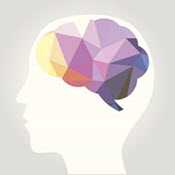Epilepsy Fast Facts
About Epilepsy
Epilepsy is a disorder of the brain that causes seizures. These seizures are not caused by a temporary underlying medical condition such as a high fever.
Epilepsy can affect people in very different ways. This is because there are many causes and many different kinds of seizures. Some people may have multiple types of seizures or other medical conditions in addition to epilepsy. These factors play a major role in determining both the severity of the person’s condition and the impact it has on his or her life.

The way a seizure looks depends on the type of seizure
a person is experiencing. Some seizures can look like staring spells. Other seizures can cause a person to collapse, shake, and become unaware of what’s going on around them.
Epilepsy can be caused by different conditions that affect a person’s brain. Many times the cause is unknown. Some causes include:
- Stroke.
- Brain tumor.
- Traumatic brain injury or head injury.
- Central nervous system infection.
A person with epilepsy is not contagious and cannot give epilepsy to another person.
Read common questions about epilepsy.
Epilepsy in the United States
Active Epilepsya
In 2015, 1.2% of the total US population had active epilepsy.1
This is about 3.4 million people with epilepsy nationwide: 3 million adults and 470,000 children.1
According to the latest estimates, about 0.6% of children aged 0-17 years have active epilepsy.1,2 Think of a school with 1,000 students—this means about 6 of them could have epilepsy.
Cost of Epilepsy
The total indirect and direct cost of epilepsy in the United States is estimated to be $15.5 billion yearly. This estimate is based on a reported cost of $12.5 billion in 1995 converted to 2004 dollar value using Bureau of Labor Statistics data.3
a Active epilepsy is defined as adults, participating in the 2015 NHIS, who reported a history of doctor-diagnosed epilepsy or seizure disorder and either were currently taking medication to control it, or had one or more seizures in the past year, or both.1
References
- Zack MM, Kobau R. National and state estimates of the numbers of adults and children with active epilepsy — United States, 2015. MMWR. 2017;66:821–825. DOI: 10.15585/mmwr.mm6631a1.
- Russ SA, Larson K, Halfon N. A national profile of childhood epilepsy and seizure disorder. Pediatrics 2012;129:256-64. DOI: 10.1542/peds.2010-1371.
- Institute of Medicine. Epilepsy Across the Spectrum: Promoting Health and Understanding. Washington, DC: The National Academies Press, 2012 html
- Page last reviewed: August 3, 2017
- Page last updated: August 3, 2017
- Content source:


 ShareCompartir
ShareCompartir